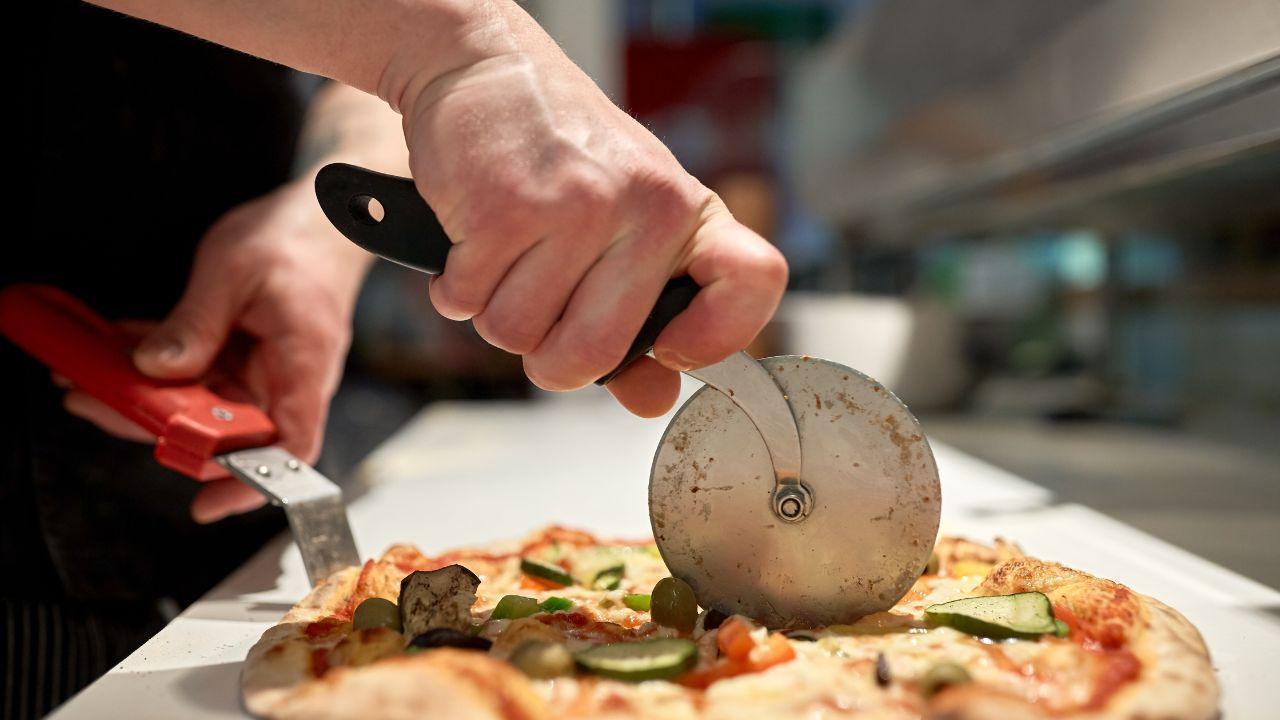
In our fast-moving world today, it’s really important for kids and families to eat in a healthy way. When you start these habits early, you’re laying a strong base for staying healthy and feeling good for your whole life. Let’s talk about how you can make eating healthy just a normal part of every day.
First, think about having a variety of foods on your plate. That means eating lots of fruits, vegetables, whole grains like brown rice or whole wheat bread, and foods with protein like chicken, beans, or fish. These foods give your body the things it needs to grow strong and have plenty of energy.
Snacks are important too. Instead of choosing chips or cookies, try things like fresh fruits, nuts, or yogurt. These snacks taste good and give your body vitamins and minerals to keep you going strong.
It’s also a good idea to drink water and milk instead of sugary drinks like soda or fruit juices with lots of added sugar. Water keeps you hydrated and helps your body work the right way.
When it’s time to eat, try cooking together with your family. It’s fun and helps you learn about healthy foods. Plus, when you help make the food, you’re more likely to want to eat it!
It’s exciting to try new foods from different countries or cultures. You might find new favorites that are good for you and taste great too. Exploring different foods makes healthy eating more fun and interesting.
You know, kids learn a lot by watching adults. So, when you see grown-ups eating healthy foods and enjoying them, it makes you want to try those foods too. Be a good example for others by choosing foods that help you grow and stay healthy.
Having regular times for meals and snacks is helpful too. This way, you can tell when you’re hungry and when you’ve had enough to eat. It’s good for your body to eat at regular times so you can digest your food well and feel your best.
Sometimes it’s okay to have sweets or treats, but it’s important to eat them in moderation. That means not too much, too often. Remember, the best part of your diet should be healthy foods that help you grow and feel strong.
Being active is another big part of staying healthy. Whether you’re playing outside, joining sports teams, or just moving around, being active keeps your body strong and your mind sharp.
Lastly, when you make good choices about what you eat and how active you are, celebrate those choices! It feels good to know you’re doing things that help you stay healthy. Keep making those choices, and you’ll build habits that will keep you feeling great for your whole life.
When it comes to eating healthy, starting with balanced meals is key. Balanced meals include a variety of foods that give our bodies the nutrients they need to grow strong and stay healthy. Imagine a plate filled with colorful fruits like apples, oranges, and bananas—these are packed with vitamins that help our bodies fight off sickness and grow properly. Vegetables like broccoli, carrots, and spinach are also important because they give us energy and help keep our skin, hair, and eyes healthy.
When we eat balanced meals, we include foods from different groups. For example, whole grains like brown rice or whole wheat bread give us energy to run, jump, and play. Protein foods like chicken, fish, beans, and eggs help our muscles grow strong and keep our bodies working right. Dairy foods like milk, yogurt, and cheese give us calcium for strong bones and teeth.
The best part about balanced meals is that they can be delicious and fun to eat! Mixing different colors and flavors on our plates makes mealtime exciting. When we eat a variety of foods, we also make sure to get all the vitamins and minerals our bodies need to stay healthy.
Parents and caregivers can help by planning meals that include different kinds of foods. They can also involve kids in choosing and preparing meals. When kids help out in the kitchen, they learn about different foods and are more likely to try new things. Eating balanced meals together as a family is not only good for our bodies but also a great way to spend time together and share stories about our day.
So, starting with balanced meals means giving our bodies the right fuel to grow, play, and feel our best every day. It’s like putting together the pieces of a puzzle—each food group fits together to make us healthy and strong. When we eat balanced meals, we’re setting ourselves up for a lifetime of good health and happiness.
Choosing healthy snacks is important for kids because they provide energy and essential nutrients needed for growth and play. Instead of reaching for chips or candy, which can be high in sugar and unhealthy fats, it's better to choose snacks like fruits, nuts, yogurt, or whole grain crackers. These snacks are packed with vitamins, fiber, and protein that keep kids feeling full and energized.
When picking snacks, it's good to think about variety. Different fruits and vegetables offer different vitamins and minerals, so it's fun to try new ones. For example, apples and bananas are great for quick energy, while carrots and cucumbers are crunchy and refreshing. Mixing these with a bit of yogurt or hummus can make snacks even tastier and more satisfying.
It's also important to drink plenty of water throughout the day, especially when snacking. Water keeps kids hydrated and helps their bodies work properly. Sometimes thirst can feel like hunger, so drinking water can actually help reduce unnecessary snacking.
Snack time can also be a chance to learn about healthy eating. Kids can help prepare their own snacks, like washing fruit or spreading nut butter on whole grain toast. This helps them feel proud and excited about eating something they helped make.
Choosing healthy snacks doesn’t mean giving up treats altogether. It’s okay to enjoy sweets sometimes, but it’s best to keep those as occasional treats rather than everyday snacks. This way, kids can still enjoy their favorite treats while making sure they’re getting the nutrients their bodies need most of the time.
Overall, smart snacking means choosing foods that give kids the energy they need to play, learn, and grow. It’s about making tasty choices that are good for their bodies and minds, setting them up for a healthy lifestyle now and in the future.
When it comes to keeping our bodies strong and healthy, what we drink is just as important as what we eat. Sugary drinks like soda, sweetened juices, and energy drinks might taste good, but they can cause problems for our health if we drink them too often.
Sugary drinks have a lot of sugar in them, which can lead to problems like tooth decay and weight gain. Too much sugar can also make us feel tired and cranky. Instead of sugary drinks, it's better to choose drinks that are good for our bodies, like water, milk, and unsweetened fruit juice.
Water is the best choice because it helps our bodies stay hydrated and doesn't have any sugar. It's like giving our bodies a drink of cool, refreshing goodness. Milk is also great because it has calcium that makes our bones strong and helps us grow. Plus, milk comes in different flavors like chocolate or strawberry, which can be a tasty treat without too much sugar.
Fruit juice is okay too, but it's important to choose 100% fruit juice that doesn't have any added sugar. This way, we still get the vitamins from the fruit without all the extra sugar that can cause problems.
Sometimes, it can be tempting to drink sugary drinks because they taste sweet and yummy. But remember, our bodies feel better when we choose healthy drinks that give us energy and help us stay strong. If we drink water, milk, and unsweetened fruit juice most of the time, our bodies will thank us for making smart choices!
So, next time you're thirsty, think about what your body really needs to stay healthy and happy. Choose water, milk, or unsweetened fruit juice, and enjoy feeling great inside and out!
Cooking together with your kids is not just about making food—it's a fun and educational experience that can bring families closer. When you cook together, you're not only creating delicious meals but also teaching important skills that will last a lifetime.
Imagine your kitchen filled with laughter and excitement as you and your children gather around to chop vegetables, mix ingredients, and discover new flavors. It's a chance for them to learn about healthy foods like fruits and vegetables, and how these ingredients can be transformed into tasty dishes.
Cooking together encourages creativity and curiosity. Kids can experiment with different flavors and textures, learning what they like and exploring new tastes along the way. This hands-on approach helps them develop a love for nutritious foods while building confidence in their abilities.
Moreover, cooking is a great opportunity to teach math and science concepts. From measuring ingredients to observing how heat changes food, every step in the kitchen is a chance to learn something new. These skills are practical and valuable, preparing children for success both in and out of the kitchen.
Beyond the practical benefits, cooking together fosters communication and teamwork. It's a time to share stories, ask questions, and work together towards a common goal. This strengthens family bonds and creates lasting memories that children will cherish.
For parents, cooking together is a chance to instill healthy eating habits from a young age. By involving children in meal preparation, you empower them to make nutritious choices and appreciate the importance of a balanced diet. They're more likely to eat what they've helped to cook, making meal times enjoyable and stress-free.
In essence, cooking together is more than a task—it's a joyful experience that nurtures skills, relationships, and healthy habits. Whether you're making a simple snack or preparing a full meal, the time spent in the kitchen with your kids is invaluable. It's a journey of discovery and connection that brings families closer and lays the foundation for a lifetime of healthy eating and happiness.
Exploring new foods can be like embarking on an exciting adventure for kids and families alike. It’s all about discovering different flavors, textures, and colors that make eating fun and interesting.
Imagine trying a vibrant red dragon fruit for the first time. Its sweet and juicy taste might surprise you! Or tasting a tangy mango from the tropics, its bright orange flesh bursting with vitamins. These fruits aren’t just delicious—they’re packed with nutrients that keep our bodies healthy and strong.
Exploring new foods isn’t just limited to fruits. Have you ever tasted quinoa, a tiny grain that’s super nutritious? It’s like rice, but with a nutty flavor and lots of protein to keep you full and energized. And how about trying sushi, with its bite-sized pieces of rice and fresh fish? It’s a taste sensation from Japan that many kids love once they give it a try.
When we explore new foods, we learn about different cultures too. Foods like tacos from Mexico, with their crunchy shells and tasty fillings, or pasta from Italy, with its comforting flavors and shapes. Each food tells a story about the people who enjoy it and the places it comes from.
Sometimes, trying new foods can be a bit scary. Maybe you’re not sure if you’ll like it or if it will taste different from what you’re used to. But remember, being brave and giving it a try is part of the adventure! You might discover a new favorite food that you want to eat again and again.
So, whether it’s a colorful vegetable, a unique grain, or a dish from a far-off land, exploring new foods opens up a world of tastes and possibilities. It’s a journey of discovery that helps us grow healthy bodies and adventurous palates. Who knows what delicious surprises you’ll find next time you try something new?
Setting a good example for children when it comes to healthy eating is more than just telling them what to do—it’s about showing them how to make nutritious choices a natural part of everyday life.
Imagine this: when you, as a parent or caregiver, choose to fill your plate with colorful fruits and vegetables, lean proteins like chicken or beans, and whole grains like brown rice or whole wheat bread, you’re not just eating—you’re teaching. Children are like sponges; they absorb everything they see and hear, including your food choices.
When they see you enjoying a crunchy apple instead of reaching for a bag of chips, they learn that fruits are tasty and satisfying. When they watch you drink water throughout the day instead of sugary sodas, they understand that hydration is important for feeling good.
It’s not just about what you eat, but how you talk about food too. Using positive language like "let's try this new vegetable together" or "I love how strong I feel after eating a healthy meal" reinforces the idea that healthy eating is enjoyable and beneficial.
Being a role model for healthy eating also means involving children in the process. Take them grocery shopping and let them pick out fruits and vegetables they want to try. When you cook meals together, explain why certain foods are good for their bodies, like how protein helps build strong muscles or how calcium in milk keeps bones strong.
Setting a good example isn’t about being perfect all the time either. It’s okay to enjoy treats occasionally or to have a day when vegetables aren’t the star of the meal. What’s important is showing children that healthy eating is a balance, and every nutritious choice contributes to feeling good inside and out.
By setting a good example for healthy eating, you’re not just nurturing their bodies—you’re empowering children to make smart food choices for life. And that’s a lesson that lasts far beyond mealtime.
Establishing regular meal times is like setting a daily rhythm for eating that helps kids and families stay healthy and energized throughout the day. When you have consistent times for breakfast, lunch, and dinner, it creates a routine that makes eating easier and more enjoyable.
Imagine waking up to a nutritious breakfast every morning, whether it’s cereal with fresh fruit or whole wheat toast with peanut butter. This sets the tone for the day, giving you the energy you need to start your morning activities.
At lunchtime, having a balanced meal with vegetables, protein like chicken or beans, and whole grains like brown rice or whole wheat bread keeps you full and focused. It’s like a pit stop during a busy day, giving your body the nutrients it needs to keep going strong.
And in the evening, dinner is a time to wind down and enjoy a meal together as a family. Whether it’s pasta with tomato sauce and a side salad or grilled fish with steamed vegetables, dinner is a chance to connect and share stories from the day.
Having regular meal times also helps you listen to your body’s hunger cues. When you eat at consistent times, you’re more likely to recognize when you’re hungry and when you’re full. This can prevent overeating and keep your digestion running smoothly.
Plus, when meals are predictable, it’s easier to plan ahead and make healthier choices. You can shop for groceries knowing what meals you’ll make, and you can prepare ingredients in advance, saving time and making cooking more fun.
So, whether it’s breakfast before school, lunch at noon, or dinner in the evening, establishing regular meal times is a simple yet powerful way to promote healthy eating habits for kids and families alike. It’s about nourishing your body, enjoying delicious food, and creating moments together around the table.
Teaching moderation in eating means finding a balance between enjoying foods that are good for you and occasionally having treats that are not as healthy. It’s important for kids to learn this because it helps them understand that all foods can fit into a healthy diet.
When we talk about moderation, we mean not having too much of foods that are high in sugar, salt, or fat. These foods can be things like candy, chips, and sugary drinks. While it’s okay to have them sometimes, it’s better to enjoy them in small amounts.
Moderation also means paying attention to portion sizes. Instead of eating a whole bag of chips, it’s better to have a smaller amount and pair it with something healthier, like a piece of fruit or some vegetables.
Teaching moderation helps kids learn to listen to their bodies. They can learn to recognize when they’re hungry and when they’re full. This way, they won’t eat more than they need just because something tastes good.
It’s also about teaching kids to enjoy their treats mindfully. This means savoring each bite and paying attention to how it tastes and makes them feel. By doing this, they can enjoy treats without feeling guilty and without overeating.
Moderation is a skill that takes practice. As kids grow up, they can learn to make healthy choices most of the time while still being able to enjoy their favorite treats on special occasions. This way, they can have a balanced and healthy relationship with food throughout their lives.
Physical activity is like a superpower that makes our bodies strong and happy. When kids play, run, jump, and dance, they’re not just having fun—they’re also keeping their bodies healthy and strong. Let’s explore why staying active is so important!
Imagine a sunny day at the park where kids are racing each other, climbing on monkey bars, and kicking a soccer ball. All these activities make their muscles stronger and their hearts healthier. Plus, being outside in the fresh air feels amazing!
Playing sports like soccer, basketball, or swimming is another fantastic way for kids to stay active. These games teach them teamwork, coordination, and how to have fun while exercising. Whether it’s shooting hoops with friends or doing somersaults in gymnastics class, there’s always something exciting to try.
Even if it’s raining outside, there are plenty of ways to stay active indoors. Kids can dance to their favorite songs, do yoga stretches, or create an obstacle course in the living room. The key is to keep moving and having a blast while doing it!
Did you know that being active also helps kids concentrate better in school? When they exercise, their brains get a boost of energy and oxygen, making it easier to focus and learn new things. It’s like magic for their minds!
Parents and caregivers play a crucial role in encouraging physical activity. They can join in the fun by taking family walks, riding bikes together, or playing catch in the backyard. When grown-ups show how much they enjoy being active, kids are more likely to want to join in too.
It’s important to find activities that kids love and look forward to. Whether it’s dancing, swimming, riding bikes, or playing tag with friends, the goal is to keep moving and having fun. This way, being active becomes a natural part of their daily routine, like brushing teeth or reading bedtime stories.
Remember, being active isn’t just about being strong and healthy—it’s also about feeling happy and energized. So, let’s lace up our sneakers, grab a ball or a jump rope, and embark on an exciting adventure of movement and fun! Together, we can discover the joy of staying active and enjoying a vibrant, healthy life.
When it comes to developing healthy eating habits, celebrating success plays a crucial role in motivating children and reinforcing positive behaviors. Celebrating doesn’t always mean throwing a big party; it can be as simple as a high-five or a special dinner. It’s about acknowledging and praising children for making healthy choices like eating fruits instead of candies or choosing water over soda.
Celebrations create a positive association with healthy eating, making children feel proud of their decisions. This boosts their confidence and encourages them to continue making good choices in the future. It’s important for parents and caregivers to notice and applaud these efforts, whether it’s a smile and a hug or a small treat that still fits into a healthy diet.
These celebratory moments reinforce the idea that healthy eating is enjoyable and rewarding. They also show children that their efforts are recognized and valued, which builds their self-esteem. When children feel good about making healthy choices, they are more likely to continue these habits as they grow older.
Celebrations can also be educational. They provide an opportunity to talk about the benefits of healthy foods and why they are important for growing bodies. Parents can use these moments to explain how nutritious foods help children stay strong, focused, and full of energy for all their activities.
In essence, celebrating success in healthy eating is about creating a positive atmosphere around nutrition. It’s not just about the food itself but about fostering a healthy relationship with eating. By celebrating success regularly, families can instill lifelong healthy habits in children and set them up for a future filled with vitality and well-being.
The article Celebrating Success in Healthy Eating emphasizes the importance of celebrating success in fostering healthy eating habits among children. It highlights how simple acts of celebration, such as praise and acknowledgment, can positively reinforce healthy choices like eating fruits, drinking water, and avoiding sugary drinks. These celebrations not only boost children's confidence but also educate them about the benefits of nutritious foods for growth and energy. By integrating celebrations into meal times, families create a supportive environment that encourages lifelong healthy habits.
DXB News Network encourages families to celebrate healthy eating habits while emphasizing the importance of moderation and balanced nutrition. Our aim is to provide informative content that inspires children and parents to make positive food choices for long-term well-being.
Healthy eating habits provide essential nutrients for growth, energy, and overall well-being. They also help in maintaining a healthy weight and reducing the risk of chronic diseases later in life.
Parents can encourage children to eat more fruits and vegetables by offering a variety of options, involving them in meal planning and preparation, and being good role models by eating these foods themselves.
Healthy snack options include fresh fruits, nuts, yogurt, whole grain crackers, and vegetables with hummus or guacamole. These snacks provide vitamins, minerals, and fiber without excess sugar or unhealthy fats.
Cooking together can be made fun and educational by choosing recipes that involve children in age-appropriate tasks like washing vegetables, stirring ingredients, and assembling food. It helps them learn about healthy foods and develop important life skills.
Teaching moderation helps children understand that all foods can be enjoyed in moderation, including treats that are higher in sugar or fat. It promotes a balanced approach to eating while ensuring they get the nutrients they need for growth and development.
#trending #latest #HealthyEating #KidsNutrition #HealthyKids #FamilyHealth #BalancedDiet #EatSmart #NutritiousChoices #HealthyLifestyle #ChildhoodNutrition #CookingWithKids #SnackHealthy #DrinkWater #PhysicalActivity #HealthyHabits #CelebrateSuccess #breakingnews #worldnews #headlines #topstories #globalUpdate #dxbnewsnetwork #dxbnews #dxbdnn #dxbnewsnetworkdnn #bestnewschanneldubai #bestnewschannelUAE #bestnewschannelabudhabi #bestnewschannelajman #bestnewschannelofdubai #popularnewschanneldubai

SeaWorld Yas Island and the Yas SeaWorld Research & Rescue Center have received accreditation from the Association of Zoos & Aquariums (AZA), becoming only the...Read More.

Authorities were first alerted in March by food inspectors. After months of surveillance, they arrested the pizzeria's manager at his residence, uncovering a dr...Read More.
 DigiHealth: The Largest Global Digital Health Event Launches in Dubai, Sept 2025
DigiHealth: The Largest Global Digital Health Event Launches in Dubai, Sept 2025
DigiHealth: World’s Largest Gathering for Digital Health Launches in Dubai from September 8-10, 2025
 Eric Prydz Brings His Groundbreaking HOLO Show to Dubai for the First Time
Eric Prydz Brings His Groundbreaking HOLO Show to Dubai for the First Time
Eric Prydz Brings His Groundbreaking HOLO Show to Dubai for the First Time
 Eric Prydz's HOLO Show to Debut in Dubai at GITEX GLOBAL 2024’s Closing Event
Eric Prydz's HOLO Show to Debut in Dubai at GITEX GLOBAL 2024’s Closing Event
Dubai is set to experience a groundbreaking fusion of music and technology as world-renowned DJ Eric
 7 Emirates" Art Exhibition Highlights UAE’s Rich Cultural Legacy
7 Emirates" Art Exhibition Highlights UAE’s Rich Cultural Legacy
7 Emirates" Art Exhibition, curated by the highly regarded Jesno Jackson
 Ratan Tata: A Legacy of Leadership and Kindness
Ratan Tata: A Legacy of Leadership and Kindness
Ratan Tata: A Legacy of Leadership and Kindness
SeaWorld Yas Island and Rescue Center Earn Global Accreditation for Animal Care

SeaWorld Yas Island and the Yas SeaWorld Research & Rescue Center have received accreditation from the Association of Zoos & Aquariums (AZA), becoming only the
German Police Raid Restaurant After Cocaine-Laced Pizza Becomes a Best Seller

Authorities were first alerted in March by food inspectors. After months of surveillance, they arrested the pizzeria's manager at his residence, uncovering a dr
Zayed bin Hamdan bin Zayed attends wedding reception of Thani bin Mohamed bin Jibarah Almarar

Zayed bin Hamdan bin Zayed has attended a wedding reception hosted by Mohamed bin Jibarah bin Hasan Almarar in celebration of the marriage of his son, Thani bin
Canada Implements Stricter Foreign Worker Rules to Prioritize Domestic Labor

The newly enacted regulations are designed to encourage companies to prioritize hiring Canadians over seeking foreign talent, aiming to bolster domestic employm
Department of Municipalities and Transport Launches New Occupancy Certification Program

The Abu Dhabi Department of Municipalities and Transport launched the Building Occupancy and Legalisation Certificate Programme.
Israeli Missile Destroys Residential Building in Beirut Attack

The incident has ignited global outrage and escalated tensions between the two nations involved.
Meet Pam Kaur: HSBC's First Female CFO in 160 Years of History

Pam Kaur earned an MBA in Finance and a Bachelor of Commerce (Hons) from Panjab University in Chandigarh.
Severe Storm Expected to Strike Eastern India and Bangladesh Regions

On Wednesday, authorities canceled train services, advised fishermen to avoid the sea, and readied evacuations for those in vulnerable areas as a severe cycloni
Rocket Attacks Trigger Sirens During Blinken's Visit to Tel Aviv

Israel's air force intercepted two rockets fired from Lebanon, triggering air raid sirens in Tel Aviv on Wednesday. This incident occurred during the visit of U
SLG Group Starts AED 200 Million Integrated Hub at Dubai Industrial City

the Middle East’s top manufacturing and logistics hub, part of TECOM Group PJSC’s 10 dynamic business districts in Dubai
© DNN. All Rights Reserved.